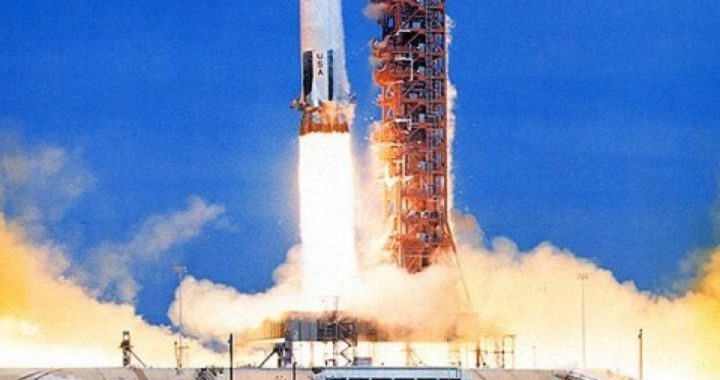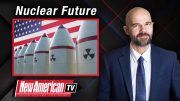
The People’s Republic of China is ambitious; you’ve got to give them that. The Asian superpower is beginning work on a rocket called the Long March 9, which would catapult a payload of 140 metric tons into a low Earth orbit. By contrast, America’s Saturn V, the vehicle used to propel American astronauts to the moon in the 1960s could carry roughly the same amount of payload.
Set to be in service by 2030, the Long March 9 is larger than any other rocket in use today. As of now, Space X’s Falcon Heavy can carry a load of 64 metric tons into low orbit. The European Space Agency’s Ariane 5 can only deliver 20 metric tons into orbit. The total thrust at liftoff for the new Chinese rocket should be between 3,500 and 4,000 metric tons, compared to about 3,400 metric tons for the Saturn V.
NASA is scheduled to deliver its new Space Launch System with a payload of 130 metric tons sometime in 2021.
In addition to the Long March 9, China has more ambitious plans for its space program, which is run by the Chinese military. China is also working on a reusable rocket, which they hope is operational by 2021, as well as a “spaceplane” similar to America’s space shuttle and the U.S. Air Force’s X-37B unmanned spaceplane, which is used to deploy satellites into low Earth orbit. China also looks to have a manned space station of its own in orbit by 2022.
The ultimate Chinese goal is to send taikonauts (astronauts) to the moon in the 2030s, with a goal of creating a space base on the lunar surface. The Chinese also look to send a probe to Mars before 2030 with the goal of returning it to Earth with samples of Martian soil.
The announcement follows a long line of recent space-related events for China. In December of 2013, the Chinese became the first country in 37 years to complete a soft-landing on the moon’s surface. The Chang’e 3 moon lander and its accompanying Yutu Rover began sending images back from the moon’s surface. Originally the Chinese landing vehicle was only set to work for three months, but the lander kept sending data back to Earth for more than 1,600 days — more than four years.
The Chinese have spent much of the last decade launching a reported eight taikonauts into space via their Shenzhou program. Like the early days of NASA, these missions have been a type of practice run for the future, with taikonauts practicing docking procedures and attempting space-walks.
And earlier this year, China’s Tiangong-1 space lab, a bus-sized spacecraft, reentered the Earth’s atmosphere, most of it burning up before it could cause any potential damage. The same thing happened with the United States’ Skylab in 1979.
Although the Chinese space program is still decades behind America’s and even Russia’s, it is quickly catching up. Kudos to China, but it makes one wonder just how much of this great leap forward into space it has been able to accomplish on its own. It has been well-established that the Chinese have been pilfering America’s and other countries’ aero-space programs for awhile now.
There’s also that long-ago American betrayal when Bill Clinton authorized the release of technology and supercomputers in exchange for illegal campaign contributions. That simple greedy and stupid maneuver gave the Chinese an estimated 20-year head-start with their rocket program.
It’s tempting to say to all of this, so what? Who cares if China goes to the moon since we already went nearly 50 years ago?
But it’s not just exploration that the Chinese are engaged in. If that were so, then why is their military in charge of the program? Satellite weaponry is a very real threat, and the United States cannot afford to fall behind a hostile communist nation in that area of expertise. Is this what President Trump’s new “Space Force” initiative is designed to address?
“Our destiny beyond Earth is not only a matter of national identity, but a matter of national security,” President Trump has said.
President Reagan took a lot of heat for his Strategic Defense Initiative, commonly known as his “Star Wars” plan in the 1980s. But the threat of space-based weapons was real then, and it’s even more real now. Before ridiculing President Trump’s new space initiative as a waste of tax dollars, we need to think about the things China might do if it ever takes the lead in this new space race.
Photo of the launch of a Saturn V rocket: NASA




